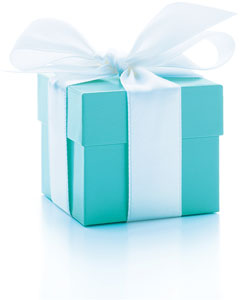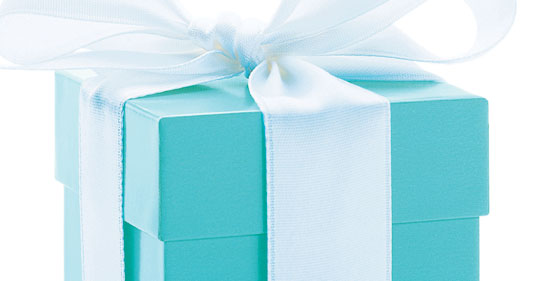 Charlie Chaplin famously said, “The saddest thing I can imagine is to get used to luxury.” Luxury is not — by definition — necessary, but we all crave it. It lifts us above our mundane routines and makes life more pleasurable.
Charlie Chaplin famously said, “The saddest thing I can imagine is to get used to luxury.” Luxury is not — by definition — necessary, but we all crave it. It lifts us above our mundane routines and makes life more pleasurable.
Ultra-premium products claim exceptional quality due to superior ingredients, a higher level of craftsmanship, limited availability and/or better design than lower-priced products in their category. These objective qualities are essential in the intellectual equation that defines luxury standing in consumers’ minds. However, the intellectual equation does not drive our luxury purchase decision. It simply provides justification for the emotional decision once we’ve made it.
LUXURY IS EMOTIONAL
Webster’s defines luxury as:
- A condition of abundance or great ease and comfort
- Something adding to pleasure or comfort but not absolutely necessary
The emotional value of a luxury brand is what makes us willing — even eager — to pay more. Because product packaging and the product itself are inextricable in consumers’ minds, package design is a powerful tool for conveying emotional attributes such as comfort and pleasure.
THREE EMOTIONAL TRIGGERS FOR LUXURY CONSUMERS
While we don’t require luxury products to meet our basic physical needs, they do satisfy key emotional needs, and this is the power behind their allure. There are a number of primary emotional triggers that luxury brand packaging can activate. Let’s focus on three:
- Our need for social approval
- Our need for comfort
- Our need to have meaning and purpose in life
By identifying which of these needs your brand fulfills, you can form a powerful platform from which to build your brand messaging and packaging design.
Start by identifying which objective attributes are behind your brand’s claim of luxury status. The emotional trigger behind your brand’s appeal flows from its objective claim to premium quality. For instance, if your brand is built on proprietary styling, exclusivity and a high level of craftsmanship, it’s likely a badge brand that appeals to consumers seeking social approval through high status. On the other hand, a brand that is over-the-top decadent may be an indulgence brand representing comfort or escape.
BADGE BRANDS MEET THE NEED FOR SOCIAL APPROVAL
Humans are social animals. Throughout history our status within our community has had a direct correlation with our security and power. High status granted us proximity to, and the favor of, those in power. With this came the security of physical protection and greater comfort due to greater access to the community’s resources. Low status meant struggle, poverty — even ostracism. The desire for status and social acceptance is wired into our survival instincts. One of the ways we broadcast our acceptability and status to our community is through the display of power and wealth.
Brands that are purchased to meet our need for social approval must be widely recognizable to others as expensive and/or exclusive. However, they are typically not flashy. Because we need to convey high status without appearing insecure, high-status packaging cues include understated, even minimal, detailing. Simple, unique proprietary branding holds pride of place. A clean, minimal design using recognizable brand colors works to highlight the brand logo without shouting. This understated attitude reinforces the exclusivity of the product itself. Tiffany & Co. packaging is an excellent example of this approach. While unmistakable, its understatement signifies confidence in the superior desirability of its product, and by association, the superior standing of its owner.
INDULGENCE BRANDS FULFILL THE NEED FOR COMFORT
For many, being pampered is the ultimate luxury. Feelings of abundance, escape from the mundane and elevation above the ordinary make us feel loved and pampered. We purchase indulgence brands in order to feel nurtured. Rather than seeking to signal our high status to others, we are reassuring ourselves that we have more than enough and are insulated from deprivation. Ease and comfort are key drivers here.
Packaging that conveys indulgence is lush, sometimes ornate, and incorporates elements such as metallic foil, script and ornament to communicate that the product inside offers more. Opulence reinforces feelings of abundance and indulgence.
BRANDS THAT STAND FOR A HIGHER PURPOSE
Man’s quest for meaning is basic and universal. People want a sense of purpose and the transcendence that comes with altruism and high-mindedness. Luxury brands that stand for sustainability, artisan production and/or purity of ingredients boost our self image and align us with others who share our values. By paying premium prices in order to express our values, we feel altruistic and forward our causes by voting with our dollars.
From sustainability to rebellion against mass-produced blandness, we confirm and express our ideologies through the brands we buy and use. When paying luxury prices, we look for visual cues that the brand is both aligned with our values and broadcasts them to others.
Brand attributes such as sustainable and/or artisanal production and purity are conveyed through visual cues such as natural materials, an earth-tone palette and the appearance of handmade simplicity. Understatement is effective here as well, and illustrations that show the artisanal production process or natural ingredients can be compelling. The use of recycled-feeling materials, visual texture and prominent taglines conveying a lofty brand mission all feed our need to do good.
CONVEYING EMOTIONAL VALUE THROUGH LUXURY PACKAGING
Luxury brands do much more than provide for the basic human needs of food, shelter and clothing. Although superior product quality is important for justifying a price premium, emotional needs are what drive luxury purchase decisions. Identifying and expressing the emotional value of your brand through packaging is crucial for luxury brand success.
Cynthia Sterling is the owner and creative director of Sterling Creativeworks (sterlingcreativeworks.com), a packaging and branding firm specializing in wine, spirits and beer. She can be reached at cynthia@sterlingcreativeworks.com.

